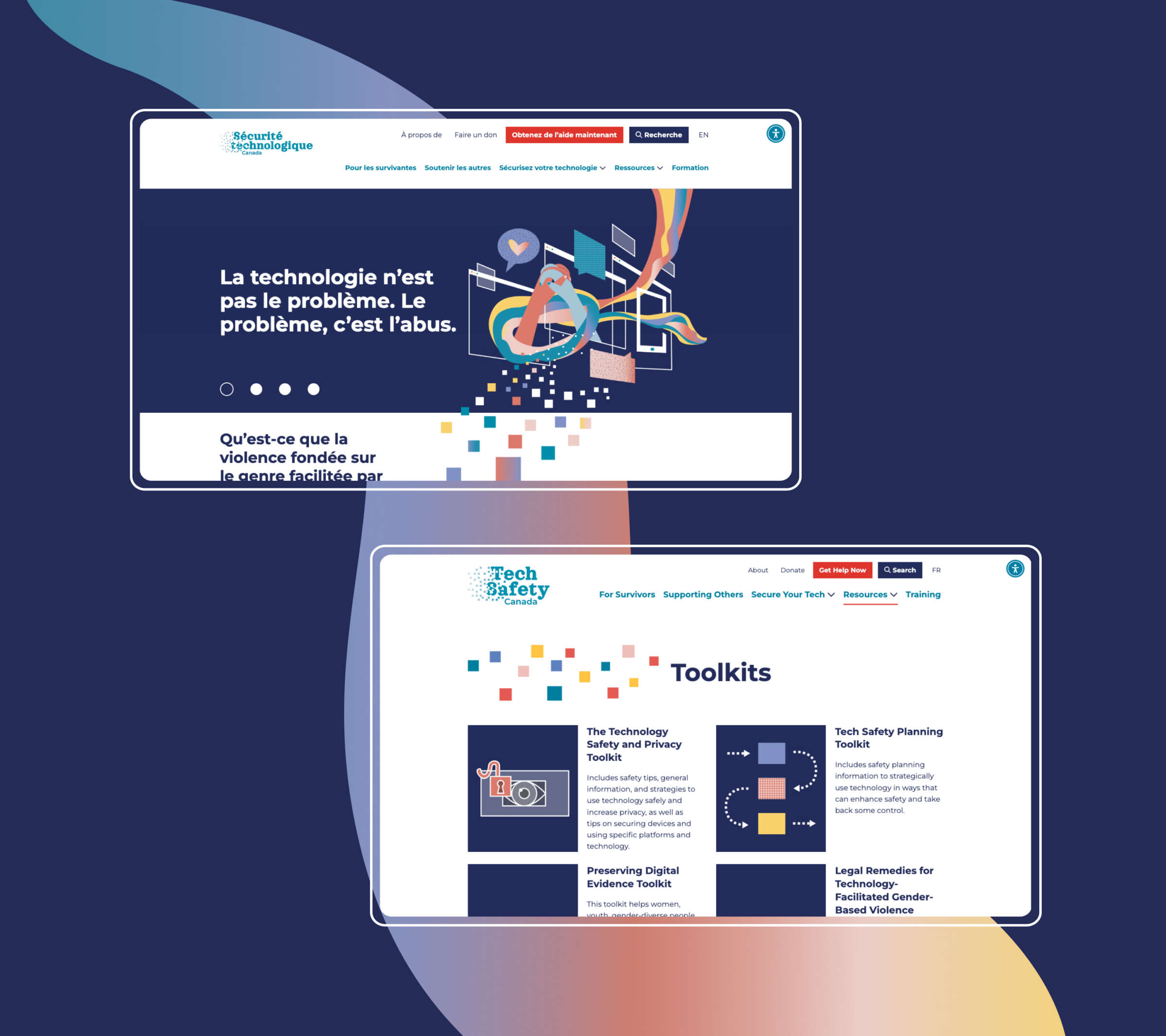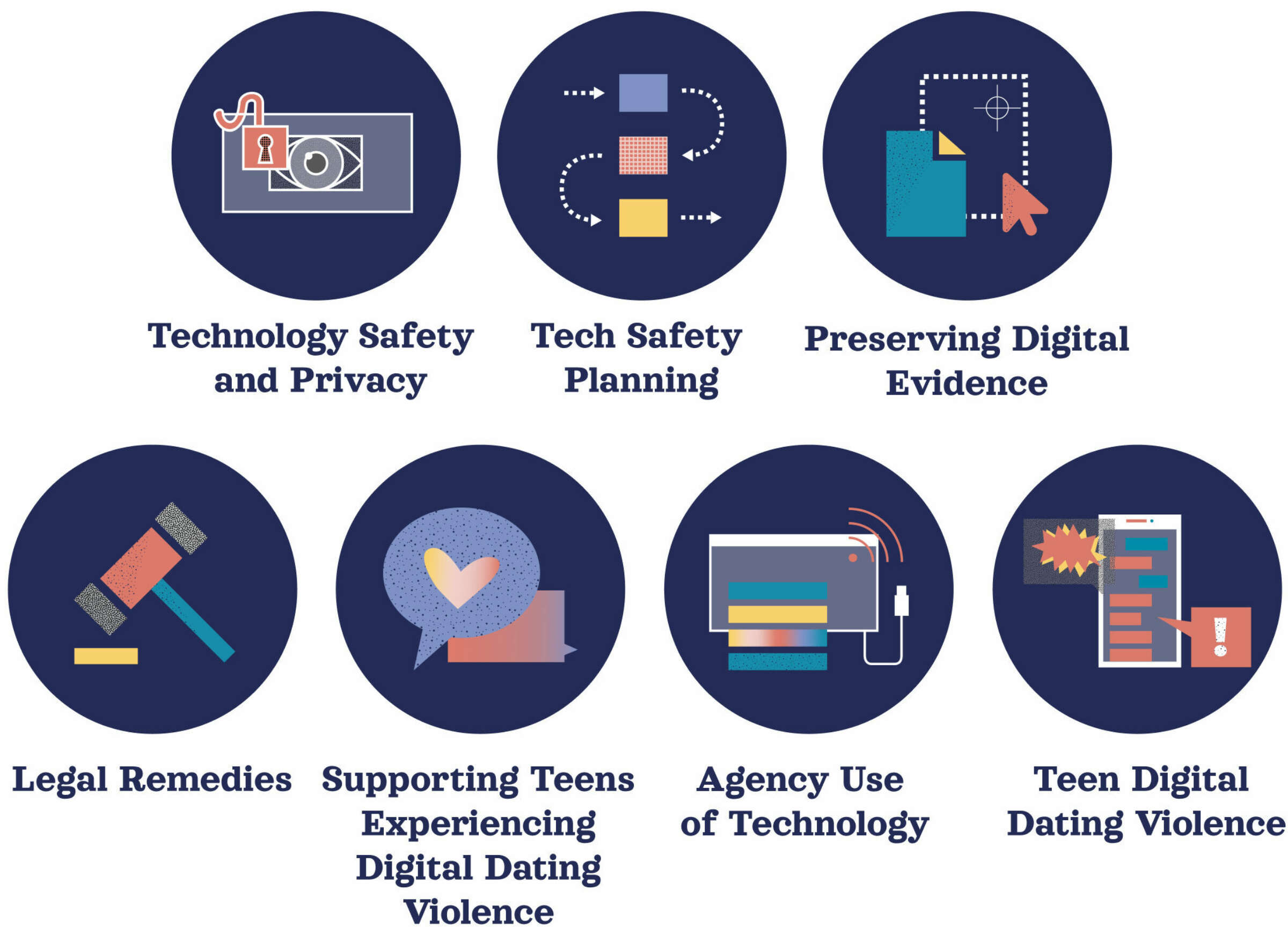Tech Safety Canada
Client
Year

Tech Safety Canada is a project born out of BC Society of Transition House’s (BCSTH) existing Technology Safety Project. Consolidated and updated by Women’s Shelters Canada, Tech Safety Canada offers resources to survivors of Tech-Facilitated Gender-Based Violence (TFGBV) and those who support them, as well as tech safety trainings for anti-violence workers.
This work draws on the experience of partners from WESNET Australia and the National Network to End Domestic Violence in the United States, and was adapted and expanded for the Canadian context.

The Need
Tech Safety Canada approached us to help build a website and visual identity for the project that would harmonize the current tech safety resources and provide scaffolding for the project to grow in scope as it was expanded nationally.
Our goals were to:
- support survivors by giving language to experience, and tools to identify tech-facilitated violence;
- support women and gender-diverse people in increasing their technology safety and privacy;
- support frontline anti-violence workers with frameworks and best practices for tech security, and tools to support;
- act as a resource for professionals outside of the sector who have a stake in tech safety work; and
- provide access to information about tech safety in as safe a way as possible, and to connect people with in-person services through Sheltersafe.ca

The Approach
We began this project by mapping out the incredible breadth and depth of resources available through BCSTH’s Technology Safety Project. A key need was for these resources to be easily navigable on the web, as well as simple to update as information changes quickly in the tech landscape. We proposed a web strategy that provided several pathways of engagement with the materials—as survivors, or as service providers—and consolidated the existing toolkits into easy to use indices of drop-down menus. All toolkits, toolkit sections, and individual resources would be available as downloadable PDFs that are generated live based on the website content, so that users needing print versions of the resources are able to access the most up-to-date information.
In tandem with the site development, we proposed a creative concept for Tech Safety Canada’s visual identity that encapsulated the spirit of the project.

The Idea
Transforming tech
In the wake of violence (online, or offline), it can be challenging to re-orient to safety—information, services, and options are often challenging to access, and the onus often feels like it’s on survivors to make sense of what remains, and re-assemble a sense of safety, security and possibility.
This framework, Transforming Tech, presents a transition from fragmented to whole. Tech Safety Canada’s new logo draws on this concept and in it, we see small squares (pixels) gently progressing towards the formation of the whole project title, producing a clearer picture and a way forward. This progression is a coming-together; an assembly in which the whole is greater than the sum of its parts. It parallels the experience of the digital toolkits at techsafety.ca: after selecting and assembling the specific tools or resources you need, you’re not just left with a toolkit, but, rather, an increasing sense of safety and possibility.
To learn more about Tech-Facilitated Gender-Based Violence visit http://www.techsafety.ca.

How do you want to change the world and how can we help?
Let’s Connect